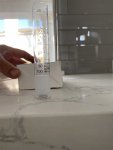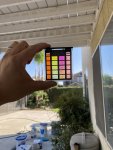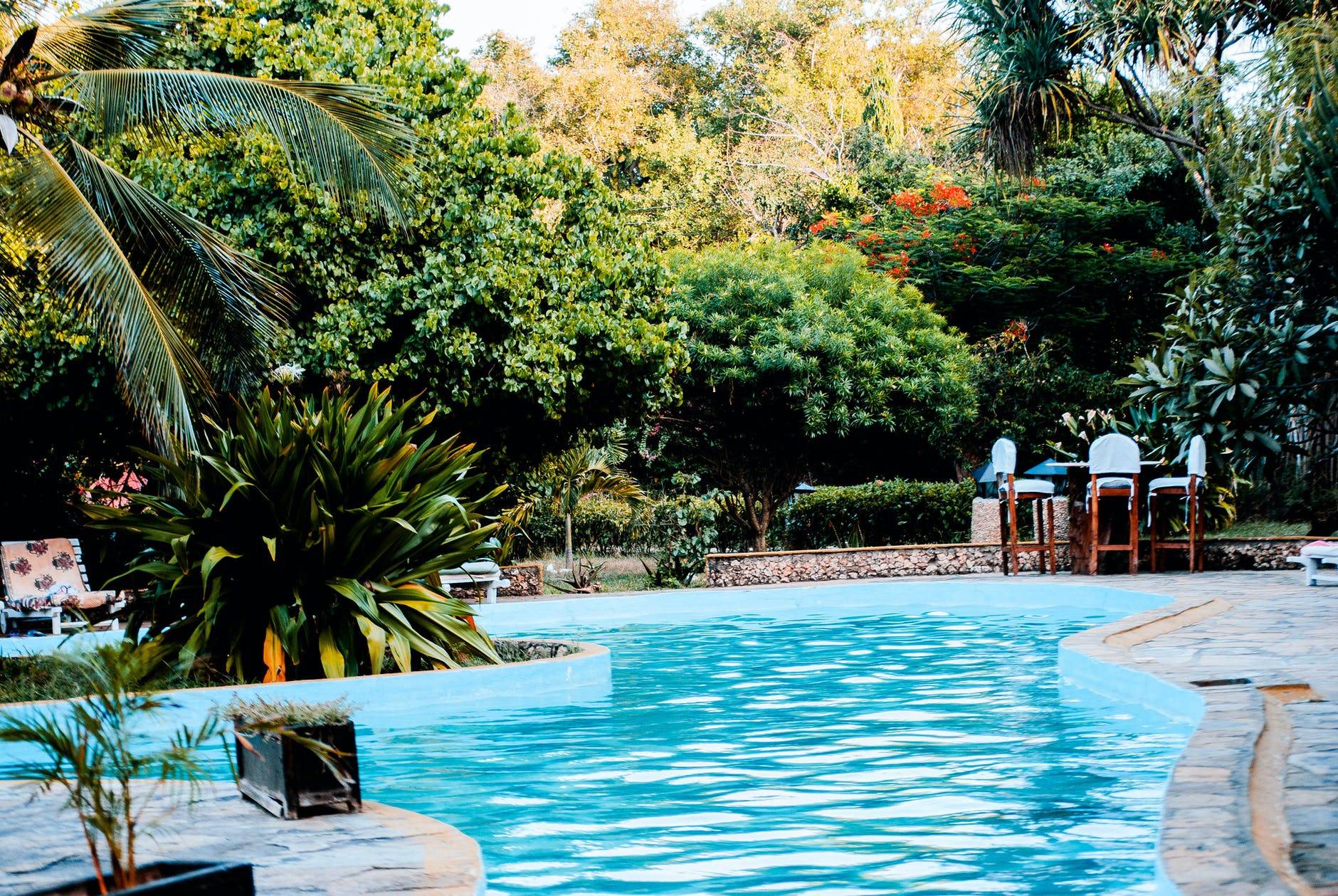Ready for your next assignment? Once you have the test kit we'll confirm the CYA level. If it's too high, you'll have to exchange some water. My instinct is that is going to happen. And you should do the exchange before we deal with the algae. So...
Some would just drain the pool some amount, and refill it. That's the easiest, most cost-effective way. But doing that is not entirely without risk. If your surrounding water table (ground water) is higher than the bottom of the pool, you can float your pool right out of the ground. This is very unlikely, I'm just giving you the facts. Also, the pressure of the water against the finish can be holding older or defective plaster to the pool. Relieving that pressure by emptying the pool can cause that defective plaster to pop off, usually in the form of blisters. Pebble is supposed to be less prone to that. New plaster too. But it did happen to me, in a pool that was only about five or six years old.
The chances of either of those things occurring is slim. But something for you to think about. So assignment #1: You could call [not sure who] to find out about the water table in your area. Maybe the local public works department, or the water company. Just to play it safe.
But an alternative to emptying the pool is to do a no-drain exchange. Which swaps water without ever lowering the water level. It uses more water, and can take longer, but eliminates either of these possibilities. So assignment #2 is to read about it: how to drain your pool. This article describes the no-drain exchange, but also describes how best to do it the other way:

www.troublefreepool.com
And assignment #3 is to think about what you want to do, and decide ahead of time, so come kit-arrival day you'll already know how to proceed.





